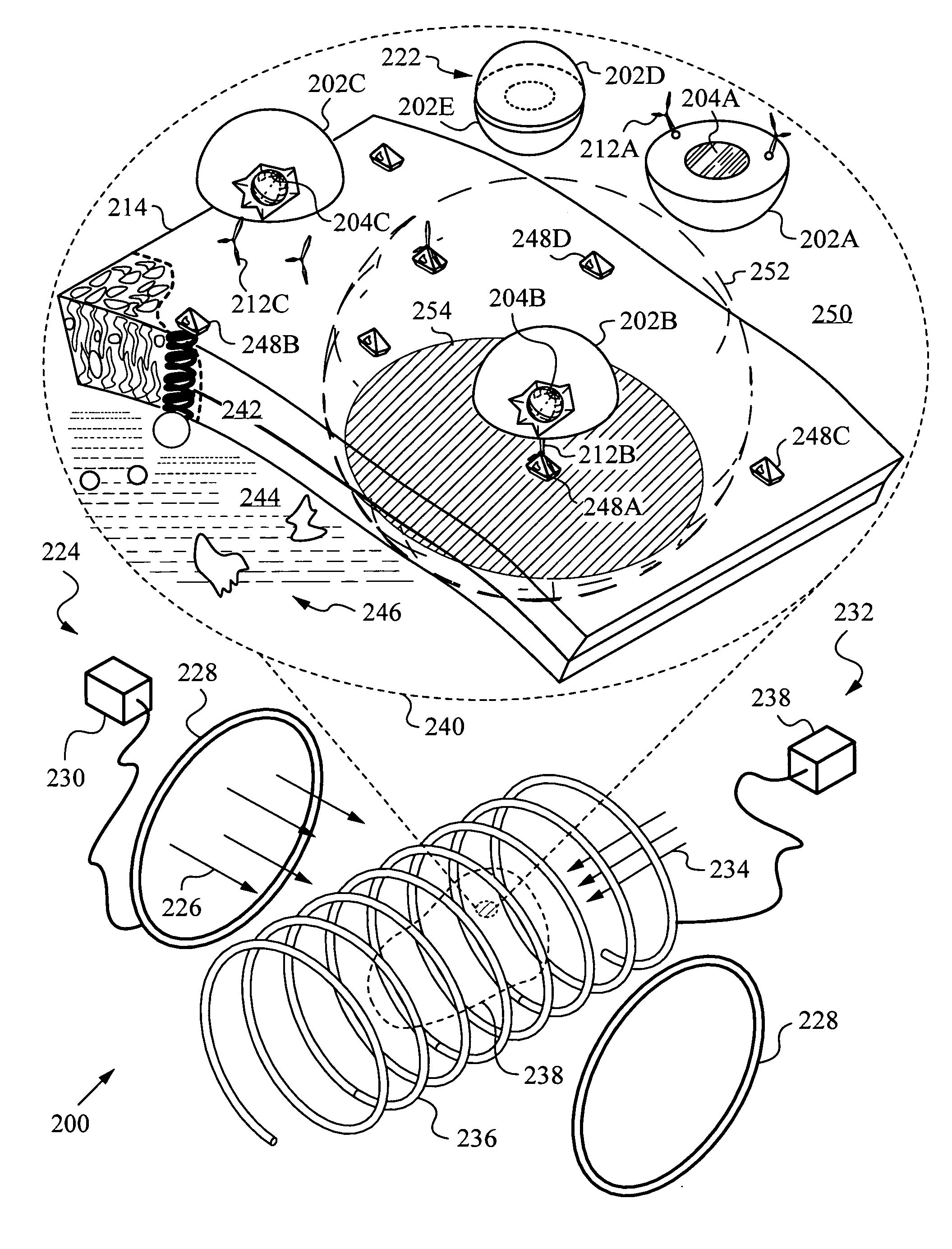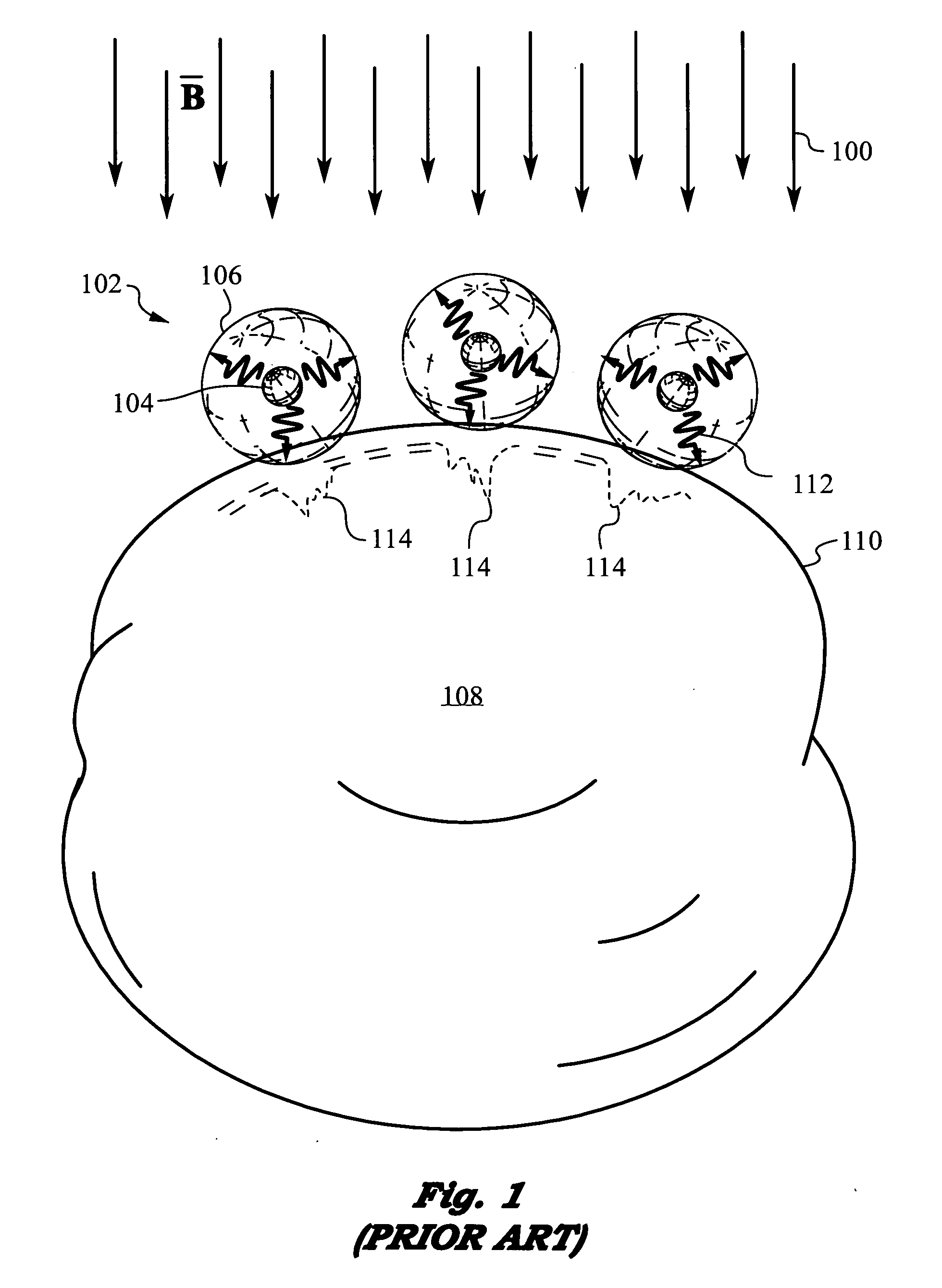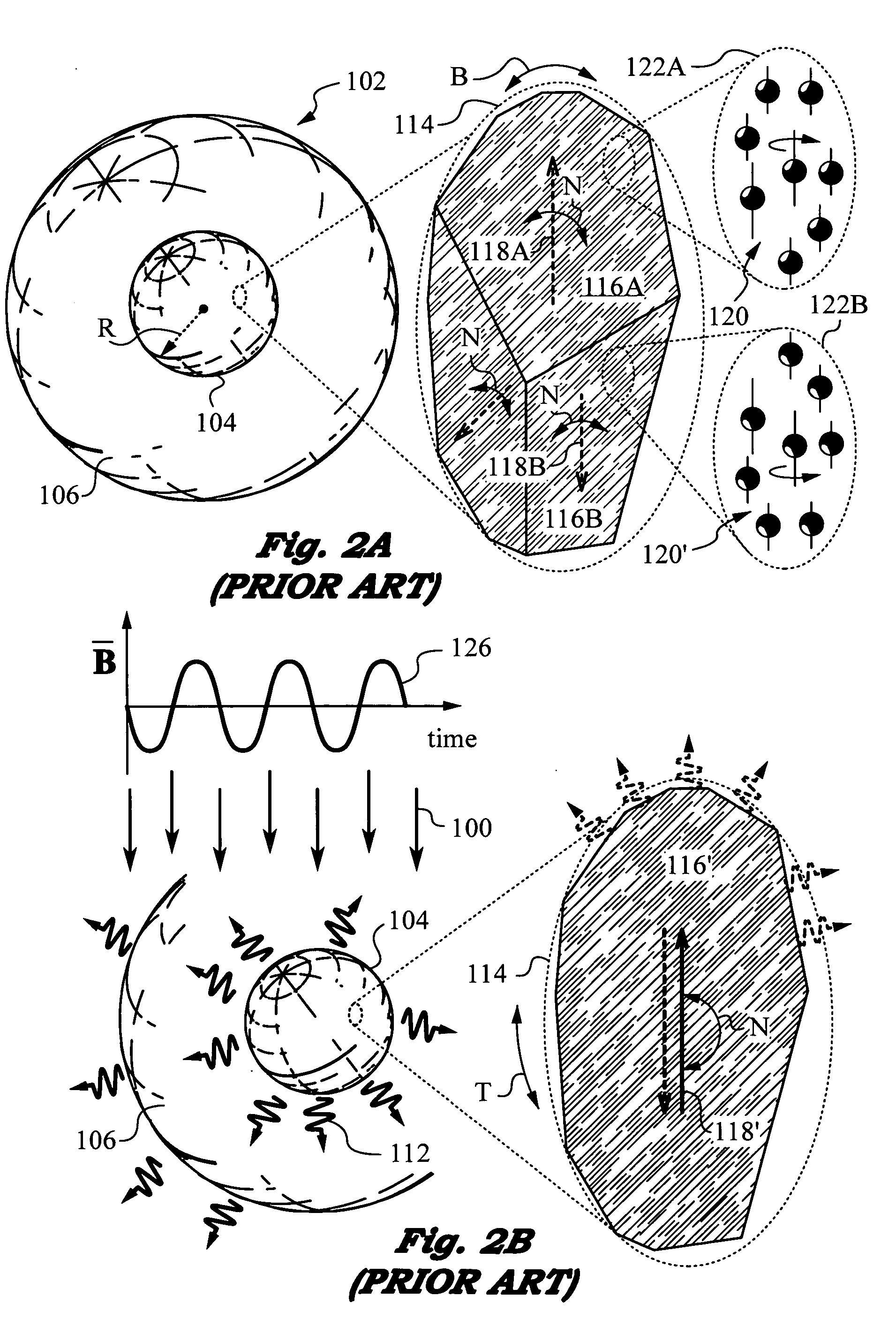Nanoparticle-sized magnetic absorption enhancers having three-dimensional geometries adapted for improved diagnostics and hyperthermic treatment
a magnetic absorption enhancer and nanoparticle technology, applied in the field of nanoparticle-sized magnetic absorption enhancers having three-dimensional geometries adapted for improved diagnostics and hyperthermic treatment, can solve the problems of increasing the duration and severity of infection of patients suffering from resistant infections, increasing the rate of morbidity, and limiting collateral damage to healthy tissue. , the effect of limiting the collateral damage of healthy tissu
- Summary
- Abstract
- Description
- Claims
- Application Information
AI Technical Summary
Benefits of technology
Problems solved by technology
Method used
Image
Examples
example 1
Targeting Intestinal Parasites
[0292]Various infections, including Enterobius vermicularis, Giardia lamblia, Ancylostoma duodenale, Necator americanus, Entamoeba histolytica, and Cryptosporidium (C. parvum, C. hominis, C. canis, C. felis, C. meleagridis, and C. muris) are a serious risk to human health. Current treatments have severe limitations. These treatments include paromomycin, iodoquinol, diloxanide furoate, tetracycline, erythromycin, metronidazole, chloroquine, rifaximin, and nitazoxanide. Each suffers from specific limitations.
[0293]Problems with paromomycin include frequent GI disturbances, rare ototoxicity and nephrotoxicity, and high expense. Problems with iodoquinol include long treatment (20-day treatment course), drug contains iodine, rare optic neuritis, and atrophy with prolonged use. Problems with diloxanide furoate include the fact that it is only available from the CDC and can use severe GI disturbances. Problems with tetracycline and erythromycin include no acti...
example 2
Using Hyperthermia to Perform Wound Debridement
[0298]In the case of treatment of a skin wound, nanoparticle hyperthermia may be simultaneously used to treat an infected wound and perform wound debridement. This could be done as an alternative to or in association with other forms of debridement (autolytic, enzymatic, mechanical, surgical, and using maggots).
[0299]In the case where wound debridement is desired, nanoparticles may be chosen with or without a targeting moiety that can be delivered to the wound environment. Delivery of the nanoparticles may be done either using a cream, sub-cutaneous injection and the like. Once applied, a period of time is allowed to elapse and the nanoparticles are allowed to disburse into the wound. This may be expedited using a magnetic field to evenly disburse the particles are described herein.
[0300]Once disbursed, the wound is exposed to an AMF that cause the nanoparticles to increase in temperature and denature necrotic tissue in and surrounding ...
example 3
Heating to Disrupt Biofilms or Prevent Biofilm Formation
[0301]Biofilms have been found to be involved in a wide variety of microbial infections in the body. Some estimates are that as much as 80% of all pathogens generate biofilms. Such biofilms substantially increase antimicrobial resistance and increase the ability of pathogens to persist, as antibodies cannot readily penetrate the biofilms. Several genetic regulation mechanisms have been implicated in biofilm regulation. These include quorum sensing and the novel secondary messenger cyclic-di-GMP.
[0302]These biofilms are implicated in urinary tract infections, catheter infections, middle-ear infections, formation of dental plaque, gingivitis, coating contact lenses, and less common but more lethal processes such as endocarditis, infections in cystic fibrosis, and infections of permanent indwelling devices such as joint prostheses and heart valves. More recently, it has been noted that bacterial biofilms may impair cutaneous wound...
PUM
| Property | Measurement | Unit |
|---|---|---|
| Volume | aaaaa | aaaaa |
| Volume | aaaaa | aaaaa |
| Volume | aaaaa | aaaaa |
Abstract
Description
Claims
Application Information
 Login to View More
Login to View More - R&D
- Intellectual Property
- Life Sciences
- Materials
- Tech Scout
- Unparalleled Data Quality
- Higher Quality Content
- 60% Fewer Hallucinations
Browse by: Latest US Patents, China's latest patents, Technical Efficacy Thesaurus, Application Domain, Technology Topic, Popular Technical Reports.
© 2025 PatSnap. All rights reserved.Legal|Privacy policy|Modern Slavery Act Transparency Statement|Sitemap|About US| Contact US: help@patsnap.com



